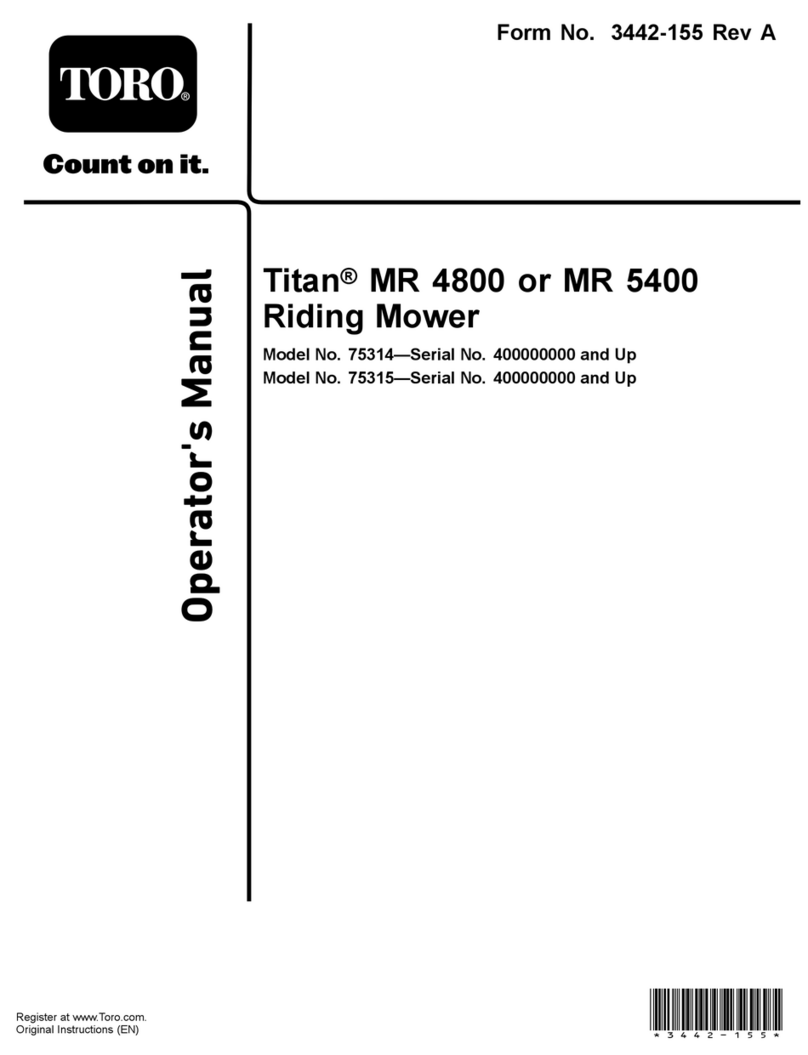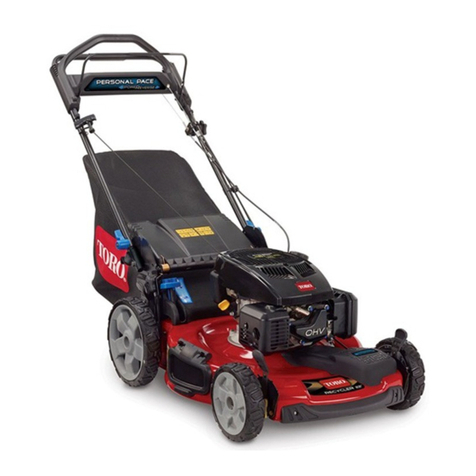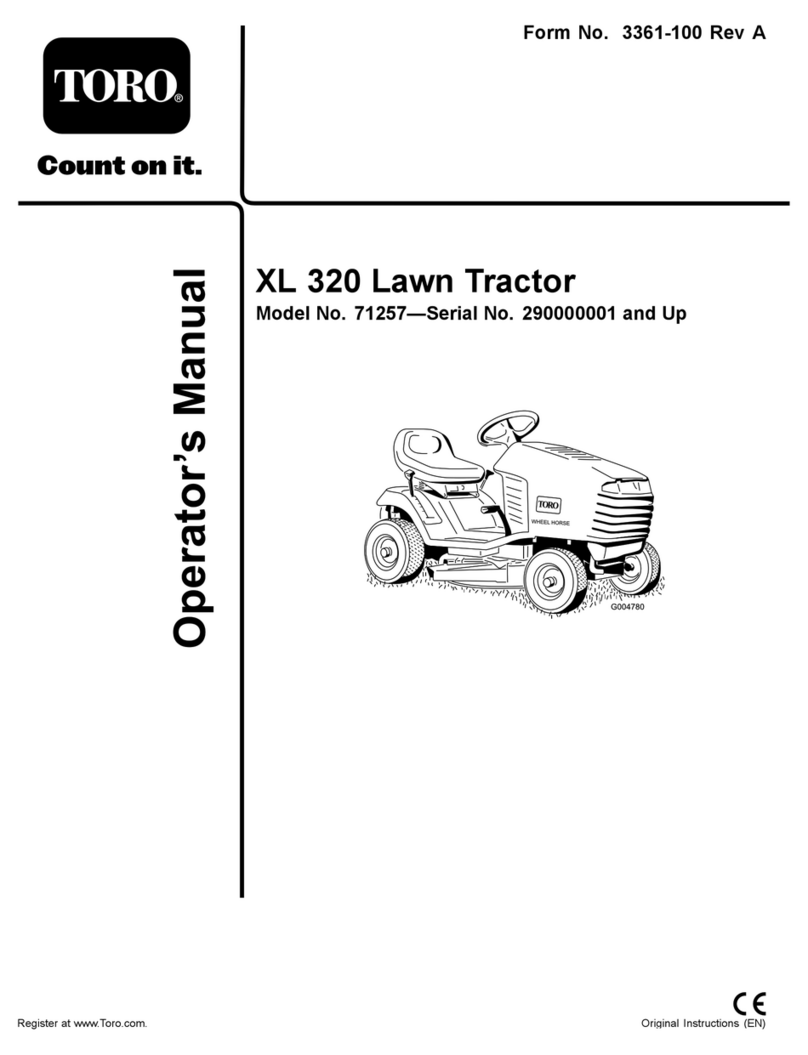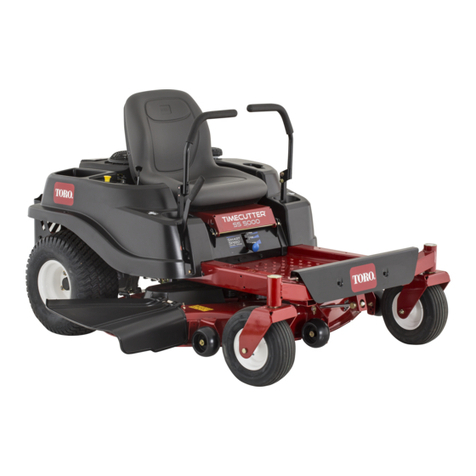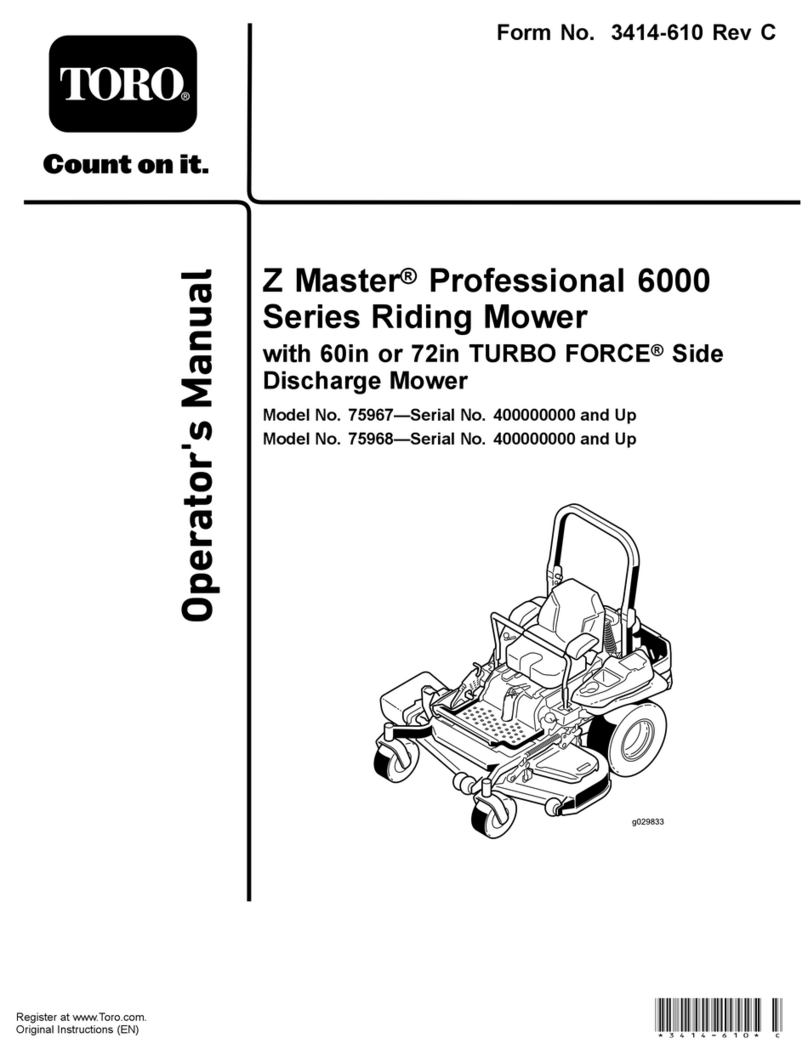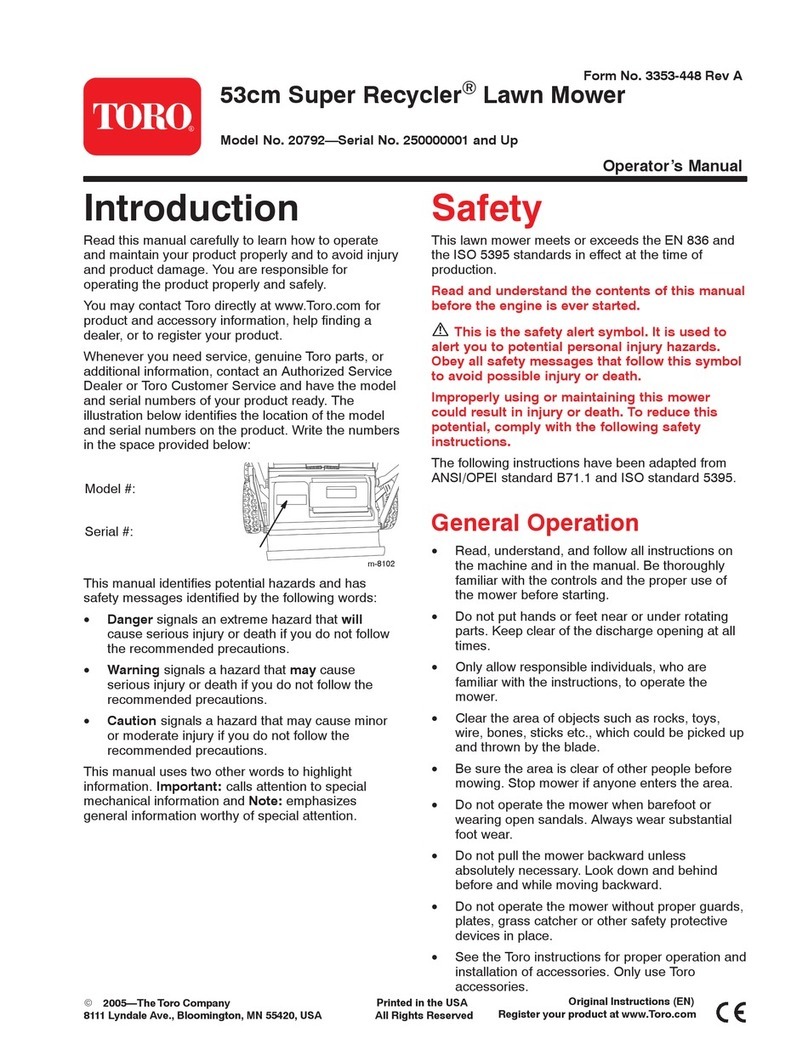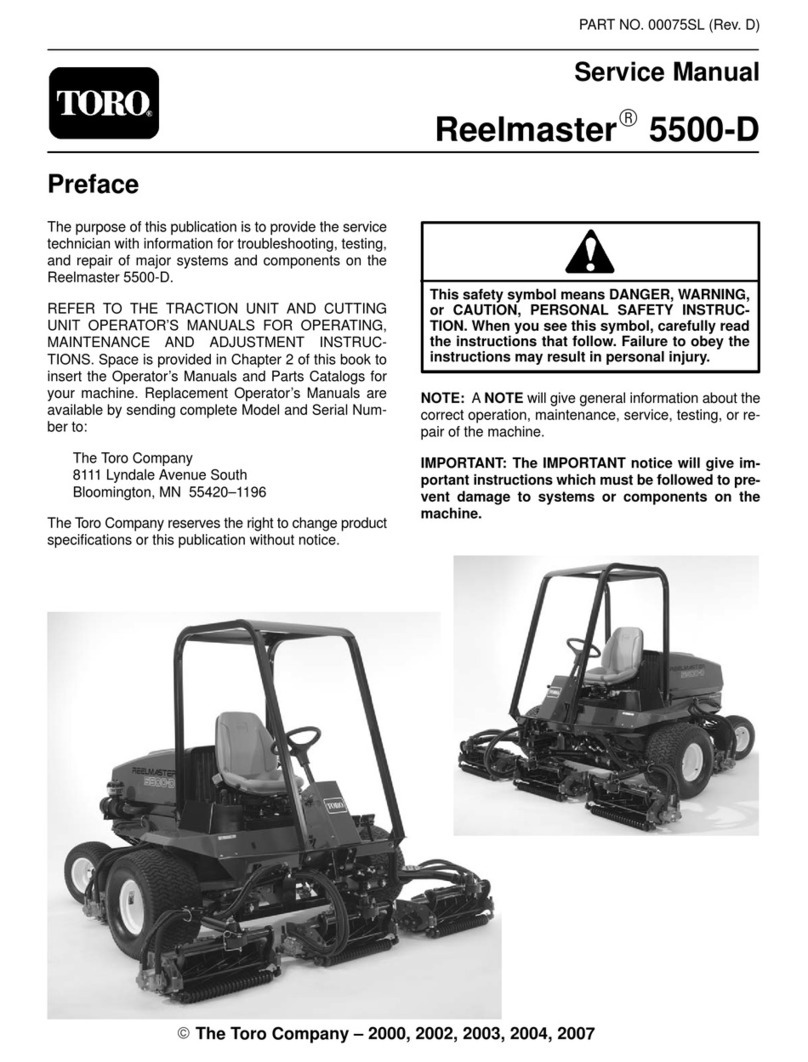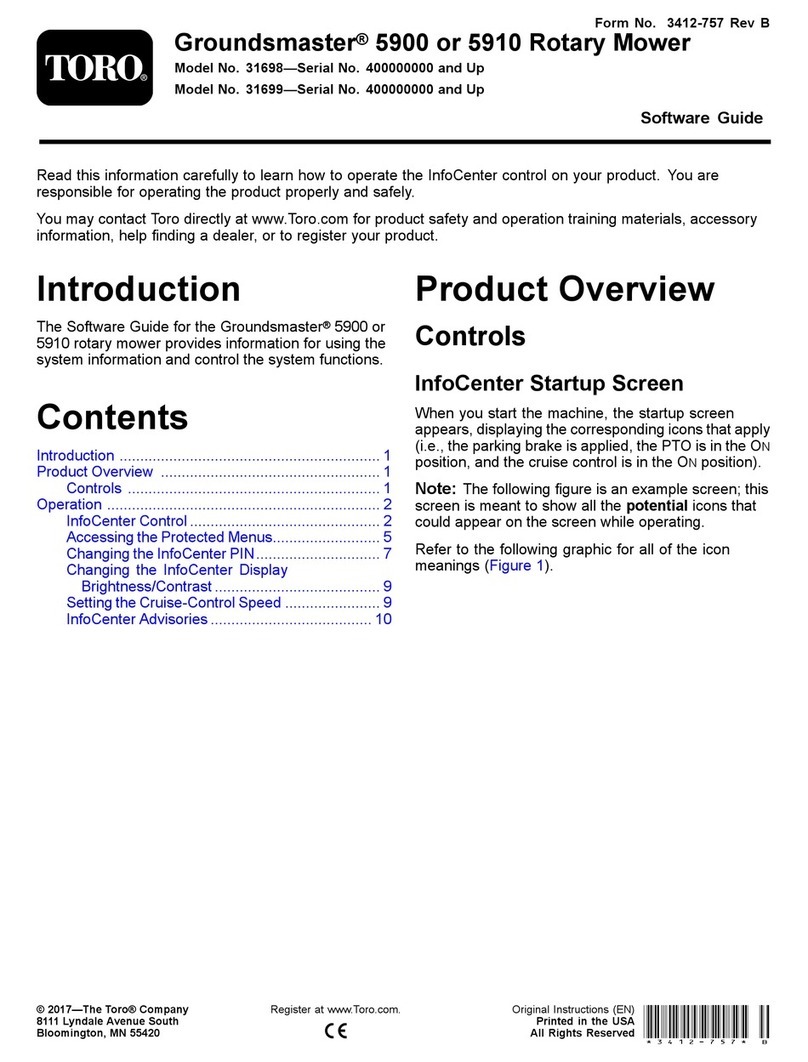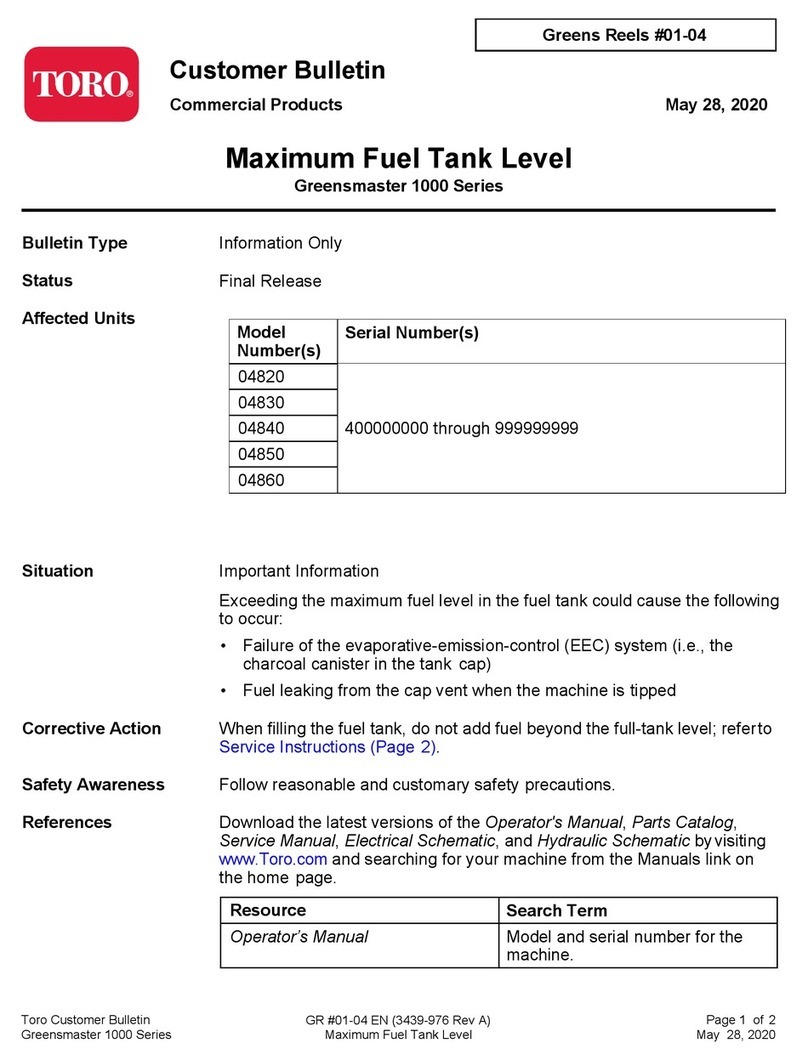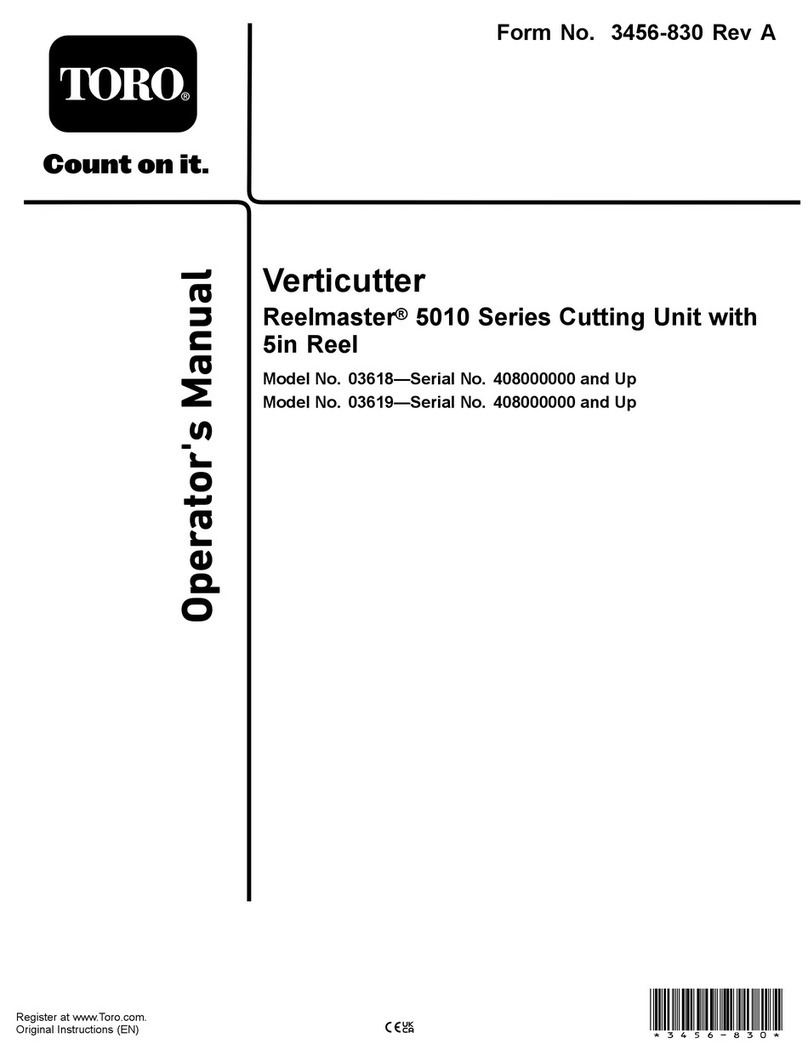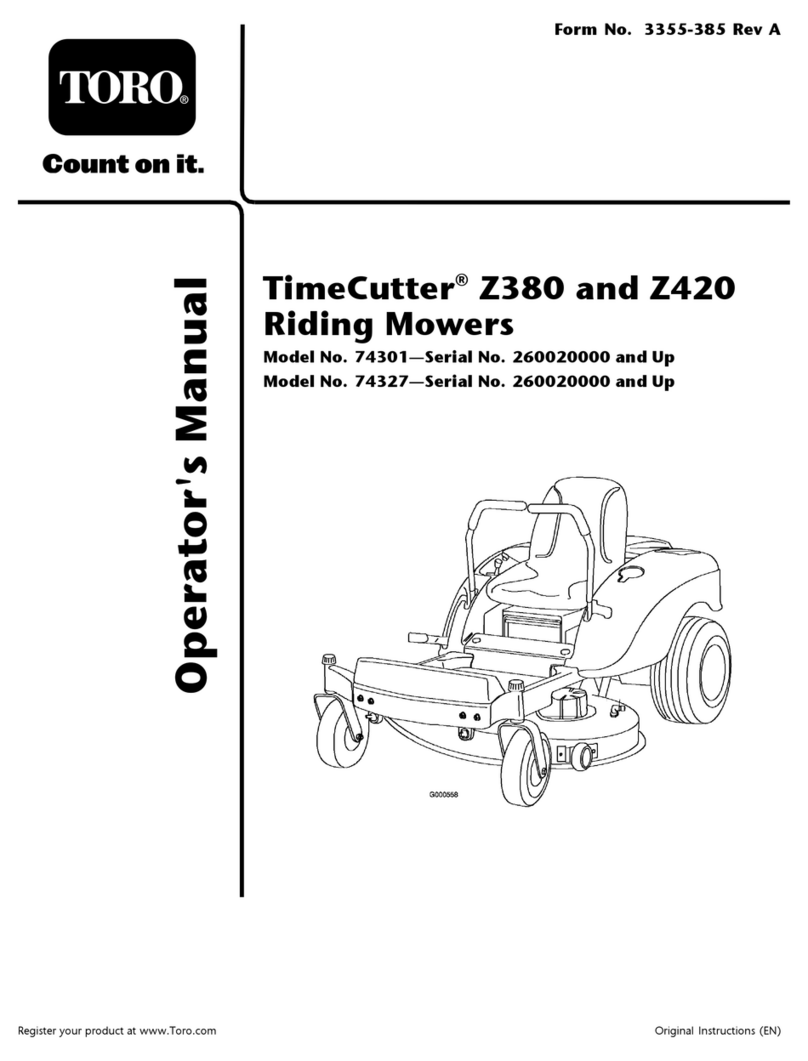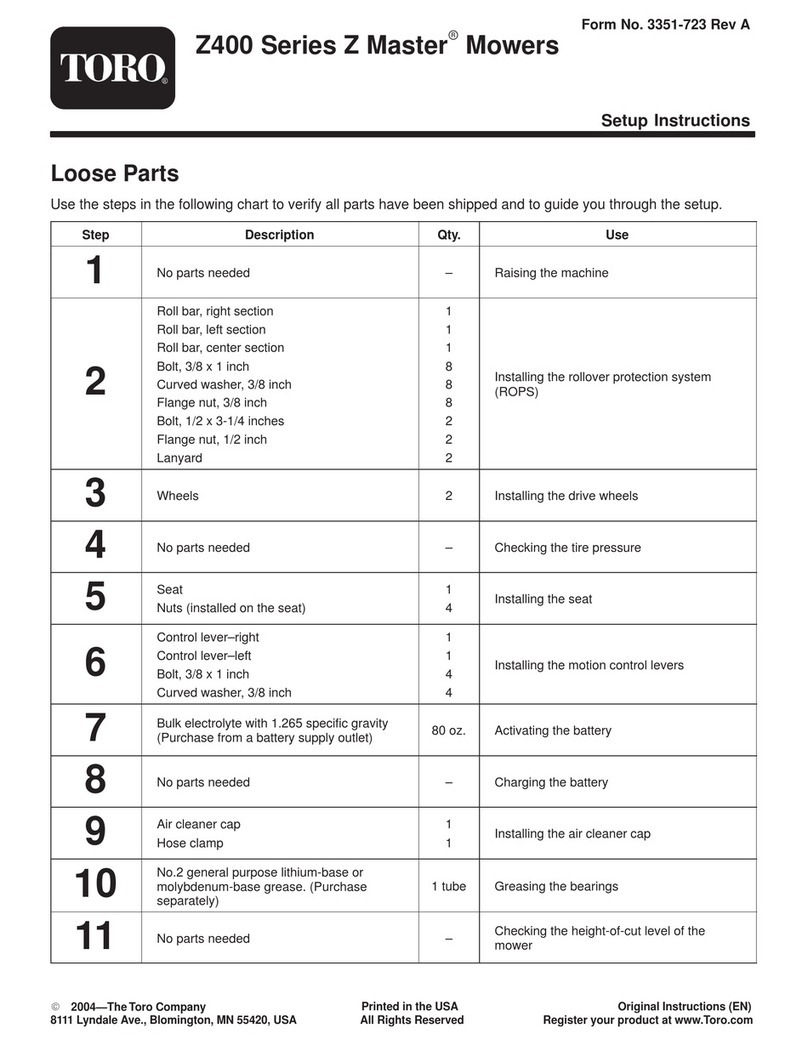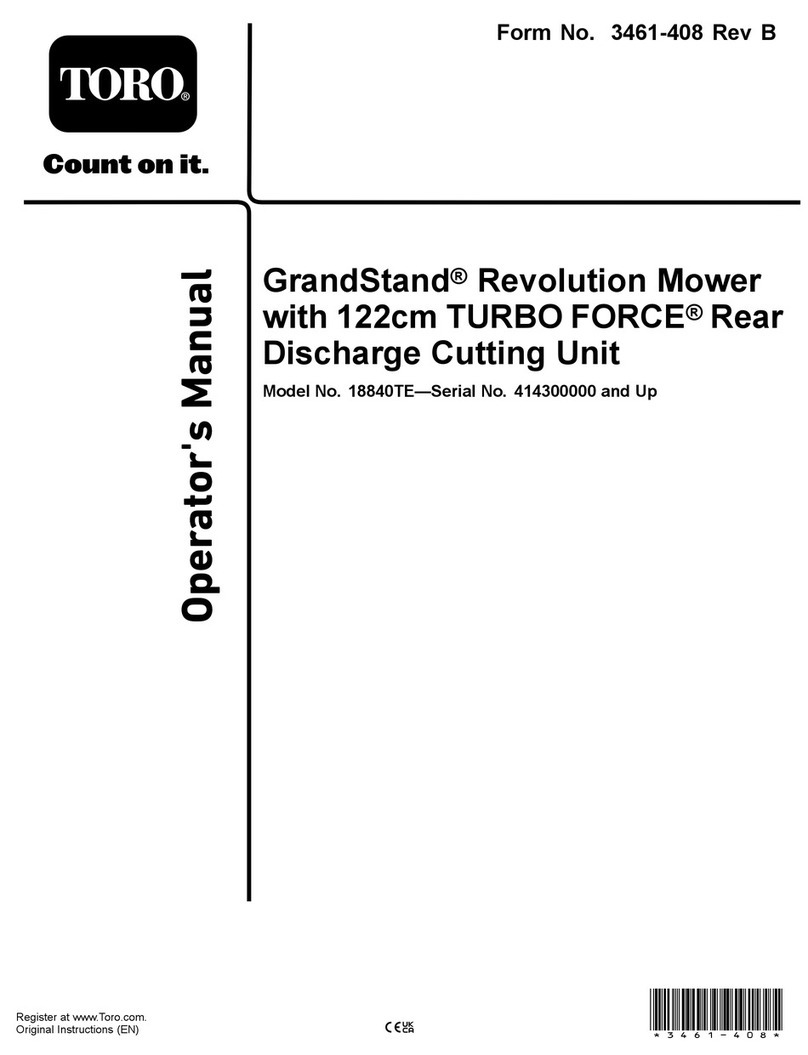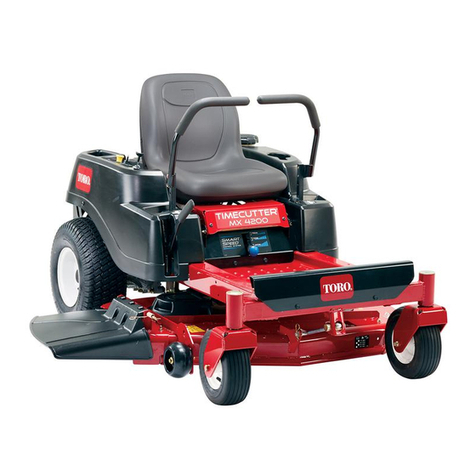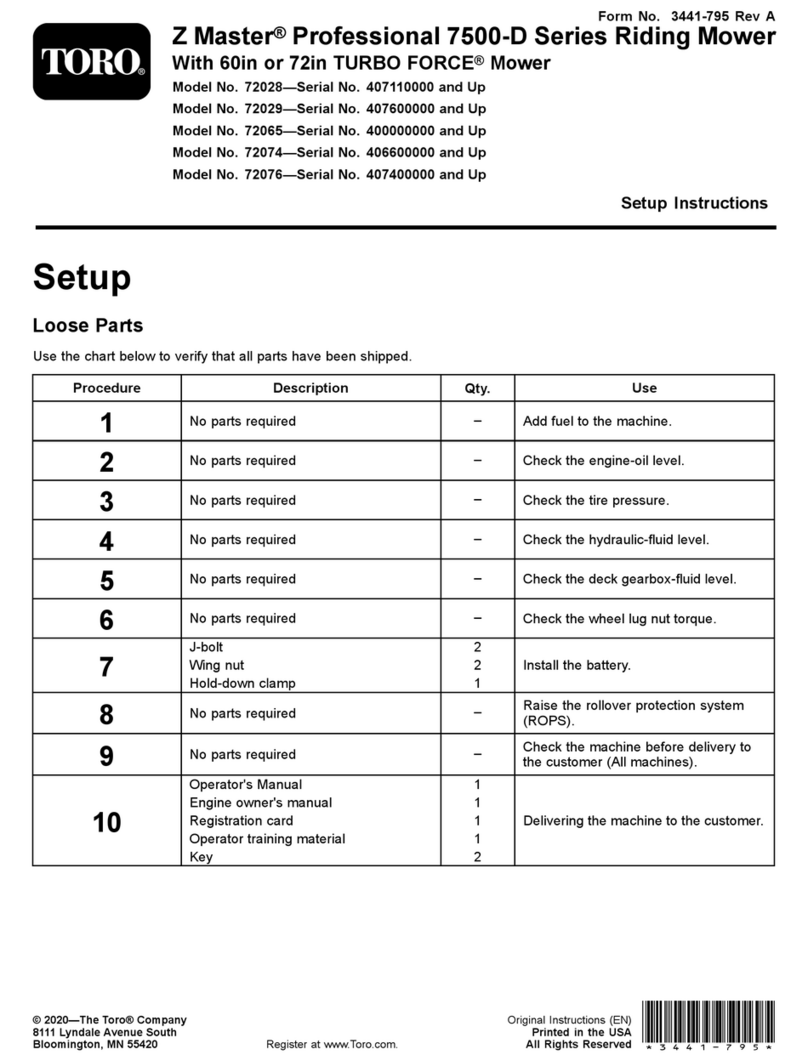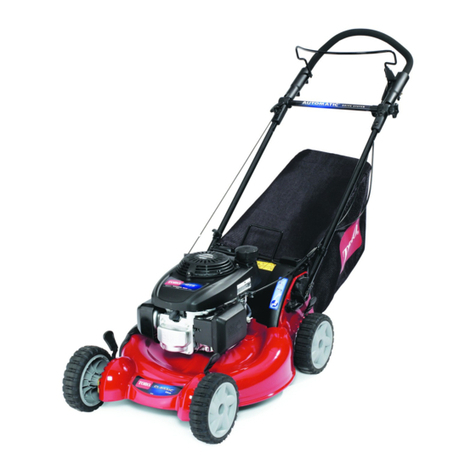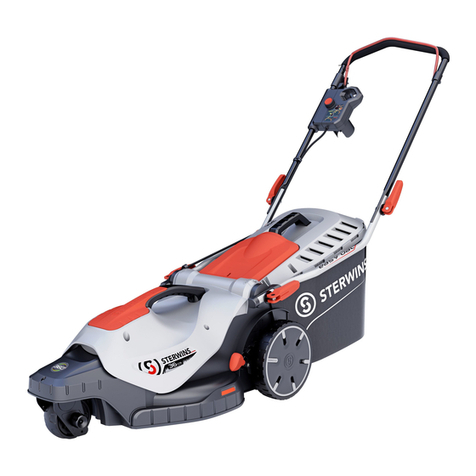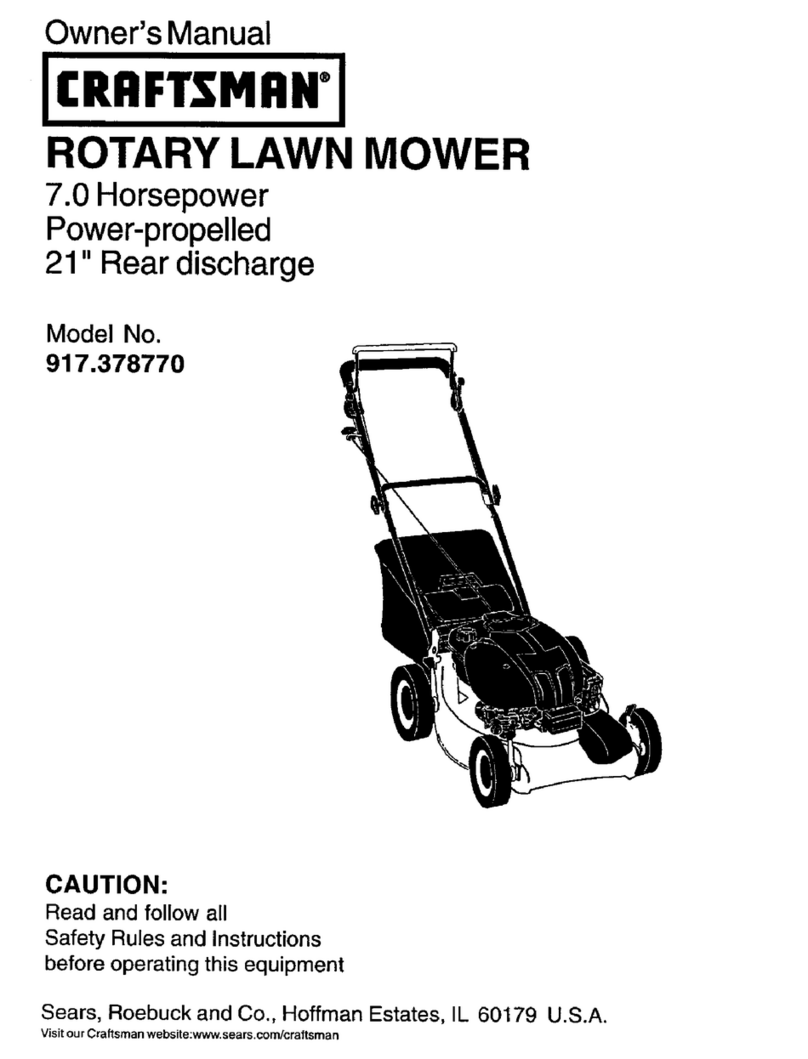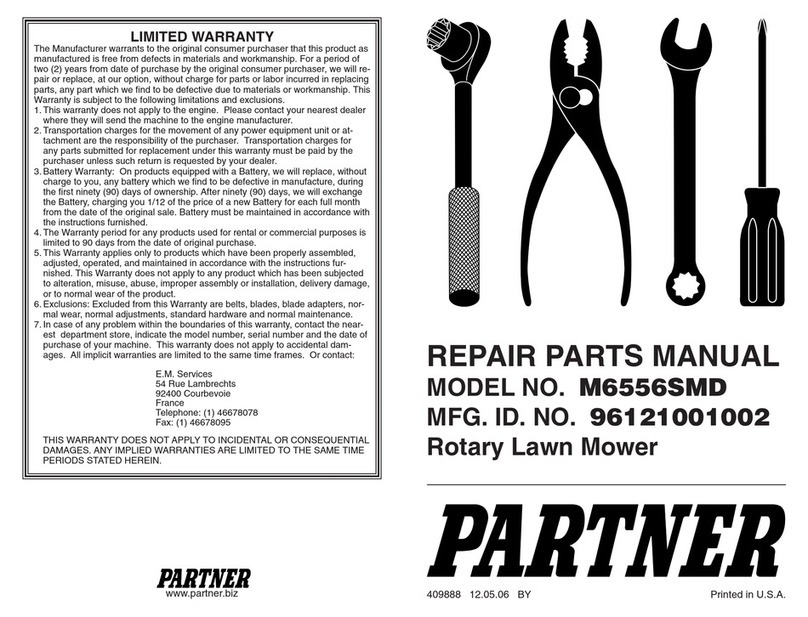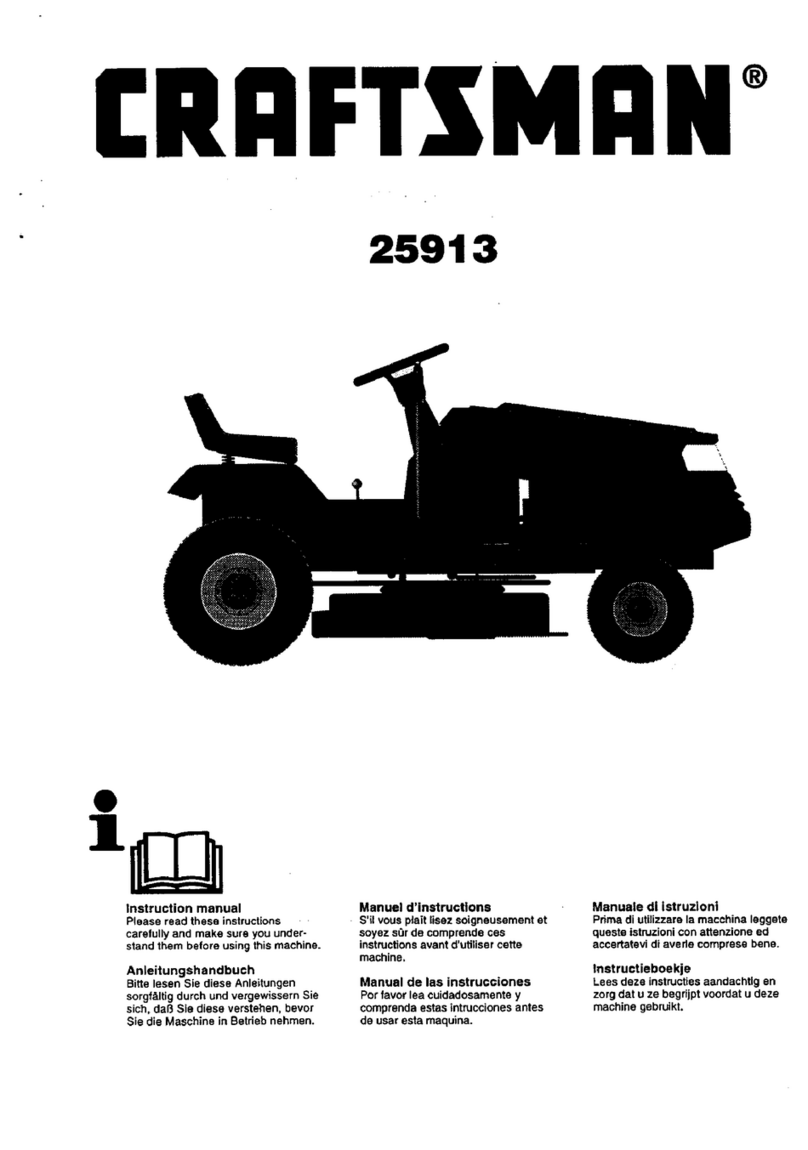3
Safety
Before Operating
1. Read the instructions carefully. Be familiar
with the controls and the proper use of the
equipment.
2. Never allow children or people unfamiliar with
these instructions to use the machine. Keep
everyone, especially children and pets away
from the area of operation
3. Become familiar with the controls and know
how to stop the machine quickly
4. Keep all shields, safety devices and decals in
place. If a shield, safety device or decal is
defective or damaged, repair or replace it before
operating the machine.
5. Always wear substantial shoes. Do not operate
the machine while wearing sandals, tennis shoes
or sneakers. Do not wear loose fitting clothing
that could get caught in moving parts and cause
personal injury.
6. Wearing safety glasses, safety shoes, long pants
and a helmet is advisable and required by some
local safety and insurance regulations.
7. Be sure the work area is clear of objects that
might be picked up and thrown by the reel.
8. keep everyone, especially children and pets,
away from the areas of operation.
9. Since gasoline is highly flammable, handle it
carefully.
A. Use an approved gasoline container.
B. Do not remove the cap from the fuel tank
when the engine is hot or running.
C. Do not smoke while handling gasoline.
D. Fill the fuel tank outdoors and not over one
inch (25 mm) from the top of the tank, not
the filler neck. Do not overfill.
E. Wipe up any spilled gasoline.
While Operating
10. Do not run the engine in a confined area with-
out adequate ventilation. Exhaust fumes are
hazardous and could be deadly.
11. Always stand behind the handle when starting
and operating the machine.
12. Do not touch the engine, muffler or exhaust pip
while the engine is running or soon after it is
stopped because these areas could be hot
enough to cause burns.
13. If you leave the machine unattended, be sure to
stop the engine so the cutting reel is not spin-
ning.
Maintenance
14. Before servicing or making adjustments to the
machine, stop the engine and pull the wire from
the spark plug to prevent accidental starting.
15. To reduce potential fire hazard, keep the engine
area free of excessive grease, grass, leaves and
dirt.
16. If the engine must be running to perform a
maintenance adjustment, keep hands, feet,
clothing and any part of the body away from the
cutting unit and any moving parts. Keep every-
one away.
17. Do not overspeed the engine by changing the
governor settings. Maximum engine speed is
3000 rpm. To assure safety and accuracy, have
an authorized Toro distributor check engine
speed with a tachometer.
18. Shut off the engine before checking or adding
oil.
19. Check the performance of the clutch system
daily. Do not defeat this system, it is for your
own protection.
